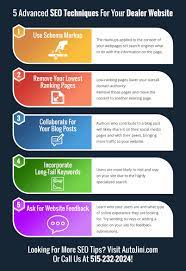The Importance of SEO and UX in Web Design
Search Engine Optimization (SEO) and User Experience (UX) are two critical components of successful web design. While they may seem like separate entities, they actually go hand in hand to create a seamless and effective online presence.
SEO: Driving Traffic to Your Website
SEO is the practice of optimizing your website to rank higher in search engine results pages. By incorporating relevant keywords, meta tags, and quality content, you can attract organic traffic to your site and improve its visibility online. A well-executed SEO strategy can help your website reach a wider audience and drive more traffic, ultimately leading to increased conversions and revenue.
UX: Enhancing User Engagement
UX focuses on creating a positive experience for users when they visit your website. This includes factors such as site speed, mobile responsiveness, intuitive navigation, and engaging content. A user-friendly website not only keeps visitors on your site longer but also encourages them to explore further and take desired actions, such as making a purchase or filling out a contact form.
The Intersection of SEO and UX
When SEO and UX work together harmoniously, the results can be powerful. By optimizing your website for search engines while also prioritizing user experience, you create a winning combination that benefits both your business and your audience. Search engines favor websites that provide valuable content and a seamless user experience, so by focusing on both aspects, you can improve your search rankings and attract more qualified leads.
Conclusion
In conclusion, incorporating both SEO and UX principles into your web design strategy is essential for success in today’s digital landscape. By optimizing your site for search engines while also prioritizing user experience, you can create a website that not only attracts visitors but also keeps them engaged and converts them into customers. Remember, SEO drives traffic to your site, but it’s the user experience that keeps them coming back for more.
9 Essential Tips to Enhance SEO and User Experience on Your Website
- Ensure fast loading speed for better user experience and SEO ranking.
- Create high-quality, relevant content that provides value to users.
- Optimize website navigation for easy access to information.
- Use responsive design to ensure your site is mobile-friendly.
- Optimize images and videos for faster loading times and better user experience.
- Include clear call-to-action buttons to guide users on the desired actions.
- Make sure your website is accessible to all users, including those with disabilities.
- Optimize meta tags and descriptions for improved search engine visibility.
- Test and monitor your website regularly to identify and fix any UX or SEO issues.
Ensure fast loading speed for better user experience and SEO ranking.
Ensuring fast loading speed is crucial for both user experience and SEO ranking. A website that loads quickly not only provides a seamless and enjoyable browsing experience for visitors but also signals to search engines that the site is well-optimized and user-friendly. Slow-loading websites can lead to high bounce rates and lower search engine rankings, as users are more likely to abandon a site that takes too long to load. By prioritizing fast loading speed, website owners can improve user satisfaction, increase engagement, and boost their SEO performance.
Create high-quality, relevant content that provides value to users.
Creating high-quality, relevant content that offers value to users is a crucial tip for optimizing both SEO and UX on your website. By delivering informative and engaging content that meets the needs and interests of your target audience, you not only improve your search engine rankings but also enhance the overall user experience. Valuable content helps establish your credibility, builds trust with visitors, and encourages them to explore further, ultimately leading to increased engagement and conversions. Remember, quality content is key to attracting and retaining users on your site while also boosting your visibility in search results.
Optimize website navigation for easy access to information.
Optimizing website navigation is a crucial tip for enhancing SEO and UX. By ensuring easy access to information through intuitive navigation menus and clear links, you can improve the user experience and encourage visitors to explore your site further. A well-structured navigation system not only helps users find what they are looking for quickly but also signals to search engines the relevance and organization of your content, ultimately boosting your site’s visibility and rankings. Prioritizing user-friendly navigation not only benefits your visitors but also contributes to a positive overall online experience that can lead to increased engagement and conversions.
Use responsive design to ensure your site is mobile-friendly.
Ensuring your website is mobile-friendly is crucial for both SEO and UX. By utilizing responsive design, you can create a seamless experience for users across all devices, from desktops to smartphones. A mobile-friendly site not only improves user engagement and satisfaction but also positively impacts your search engine rankings. With more users accessing websites on mobile devices, implementing responsive design is a smart strategy to enhance both SEO performance and user experience.
Optimize images and videos for faster loading times and better user experience.
Optimizing images and videos for faster loading times is a crucial tip for improving SEO and UX on your website. Large media files can slow down page load speed, leading to a poor user experience and potentially lower search engine rankings. By compressing images and videos without compromising quality, you can ensure that your website loads quickly and smoothly, enhancing user engagement and satisfaction. Prioritizing fast loading times not only benefits users but also signals to search engines that your site is well-optimized, ultimately boosting your SEO performance.
Include clear call-to-action buttons to guide users on the desired actions.
Including clear call-to-action buttons is a crucial tip for optimizing both SEO and UX on a website. These buttons serve as signposts that guide users on the desired actions, such as making a purchase, signing up for a newsletter, or contacting the business. By making these calls-to-action prominent, visually appealing, and easy to find, you can enhance user engagement and encourage conversions. Additionally, search engines view well-placed call-to-action buttons positively, as they indicate a clear path for users to follow, ultimately improving the overall performance of the website in terms of both search rankings and user experience.
Make sure your website is accessible to all users, including those with disabilities.
Ensuring that your website is accessible to all users, including those with disabilities, is a crucial aspect of SEO and UX. By implementing accessibility features such as alt text for images, keyboard navigation options, and proper heading structures, you not only improve the user experience for all visitors but also enhance your website’s search engine rankings. Making your website inclusive and easy to navigate for everyone demonstrates a commitment to diversity and inclusivity while also broadening your reach to a wider audience. Prioritizing accessibility in your web design ultimately leads to a more user-friendly and successful online presence.
Optimize meta tags and descriptions for improved search engine visibility.
Optimizing meta tags and descriptions is a crucial aspect of SEO that directly impacts search engine visibility. By crafting relevant and compelling meta tags and descriptions that accurately reflect the content of each webpage, you can improve your website’s chances of ranking higher in search engine results pages. These elements not only help search engines understand the context of your content but also influence users’ decision to click on your website. A well-optimized meta tag and description can increase organic traffic to your site and enhance the overall user experience, making it easier for visitors to find and engage with your content.
Test and monitor your website regularly to identify and fix any UX or SEO issues.
Regularly testing and monitoring your website is crucial to ensure optimal SEO and UX performance. By conducting regular assessments, you can identify any potential issues that may be hindering user experience or impacting search engine rankings. Whether it’s broken links, slow loading times, or outdated content, addressing these issues promptly can help improve overall site functionality and user satisfaction. Continuous monitoring allows you to stay proactive in maintaining a seamless online experience for your visitors while also maximizing your website’s visibility and performance in search results.



